Handling For dragoN777's '70 Chevrolet Chevelle 7.6
3.436
56
3.436
56
Get the car here: https://www.gta5-mods.com/vehicles/1970-chevrolet-chevelle-ss
Version 7.6 finally makes a couple of important updates for realism now that I know how to do them including the ability to coast/free roll without throttle, removal of ABS which should not be on a classic of this era to begin with, changed to a solid rear axle with no camber like the real car, fixed the stupid Rockstar wheelie update and I've also made major improvements to the general physics/handling behavior of the car.
I tried my best to make this car and Sam Mods Buick GSX handle very similar to each other because they are sister cars in real life and are built on the same body/frame platform. In real life and in my handling files the Buick drives much better because it has better suspension, factory disc brakes, a lighter engine and better aerodynamics. However the Chevelle has more HP and a lower gear. The lower gearing means the Chevelle actually has less top speed despite the extra power but that low gearing gives it brutal acceleration which makes it ideal for drag racing. In short, the LS6 454 Chevelle is best suited for drag racing and the Buick GSX is a more expensive, more refined version that does everything else slightly better including top speed.
As of version 7.4 1st gear length is fixed and wheel spin has been increased to a more realistic level, this means longer burnouts :)
Braking and cornering performance is even more realistic now, specifically the car is less likely to "oversteer" and more likely to "understeer" and brake pressure and bias have also been adjusted to more accurately mimic the cars true braking characteristics (bad brakes)
Version 1.5 changes the power level from crank horsepower to wheel horsepower, this means more accurate speeds and acceleration as well as a more realistic and more noticeable difference between automatic and manual transmissions.
1960's and 1970's American muscle cars were all about brute power and bold looks and the 1970 454 LS6 Chevelle SS was no exception. The car is powered by a monster 7.4 litre big block V8 that by itself weighs more than most motorcycles. The Chevy 454 big block produces such immense torque that less powerful versions than the LS6 were used in some GM buses and dump trucks.
We all know insurance for fast cars is expensive but during the muscle car era factory and super stock drag racing wins sold cars better than any commercial could. As a result manufacturers were producing over powered yet under rated engines made available directly to the public through various performance cars. It was a simple trick for the manufacturers to provide test results of their engines output at less than its peak RPM.
At a time when you could not afford to list your peak power and still sell the vehicle reasonably Chevrolet dared to advertise 450 horsepower, however it is common knowledge among old school muscle car guys that a 454 LS6 has over 500HP and excellent modification potential. This makes it a very sought after engine and relatively rare now that nearly 50 years have gone by. Obviously handling and cornering is not what this car does best. In fact it may be one of the worst handling two door performance cars of all time and this is mainly due to the engines weight. Just imagine trying to drive your car around with a Harley Davidson motorcycle strapped to the hood. The Chevelle's poor handling is compounded by very loose rear coil springs that are better suited for straight line weight transfer than high speed cornering. You can see the car behave this way as it "squats" lowering its rear end under hard acceleration in an effort to prevent the tires from spinning so badly. Despite poor traction and cornering abilities you should be able to out accelerate almost anything until the car reaches top speed which is relatively low for such a powerful car due to poor aerodynamics and low final drive ratio options. The low final drive ratios were purposely selected to aid acceleration at the cost of top speed because the car was being developed for quarter mile drag races and top speed numbers were not a concern.
I have included two different transmissions to choose from (4 speed manual and 3 speed auto) and two different damage levels (normal deformation and increased deformation) so that's four seperate handling files to choose from.
Not necessary but I recommend using the LeFix Speedometer and Inverse Power by IKT both available on this site.
I may update this handling over time as I learn more about the automotive physics of gtav
Version 7.6 finally makes a couple of important updates for realism now that I know how to do them including the ability to coast/free roll without throttle, removal of ABS which should not be on a classic of this era to begin with, changed to a solid rear axle with no camber like the real car, fixed the stupid Rockstar wheelie update and I've also made major improvements to the general physics/handling behavior of the car.
I tried my best to make this car and Sam Mods Buick GSX handle very similar to each other because they are sister cars in real life and are built on the same body/frame platform. In real life and in my handling files the Buick drives much better because it has better suspension, factory disc brakes, a lighter engine and better aerodynamics. However the Chevelle has more HP and a lower gear. The lower gearing means the Chevelle actually has less top speed despite the extra power but that low gearing gives it brutal acceleration which makes it ideal for drag racing. In short, the LS6 454 Chevelle is best suited for drag racing and the Buick GSX is a more expensive, more refined version that does everything else slightly better including top speed.
As of version 7.4 1st gear length is fixed and wheel spin has been increased to a more realistic level, this means longer burnouts :)
Braking and cornering performance is even more realistic now, specifically the car is less likely to "oversteer" and more likely to "understeer" and brake pressure and bias have also been adjusted to more accurately mimic the cars true braking characteristics (bad brakes)
Version 1.5 changes the power level from crank horsepower to wheel horsepower, this means more accurate speeds and acceleration as well as a more realistic and more noticeable difference between automatic and manual transmissions.
1960's and 1970's American muscle cars were all about brute power and bold looks and the 1970 454 LS6 Chevelle SS was no exception. The car is powered by a monster 7.4 litre big block V8 that by itself weighs more than most motorcycles. The Chevy 454 big block produces such immense torque that less powerful versions than the LS6 were used in some GM buses and dump trucks.
We all know insurance for fast cars is expensive but during the muscle car era factory and super stock drag racing wins sold cars better than any commercial could. As a result manufacturers were producing over powered yet under rated engines made available directly to the public through various performance cars. It was a simple trick for the manufacturers to provide test results of their engines output at less than its peak RPM.
At a time when you could not afford to list your peak power and still sell the vehicle reasonably Chevrolet dared to advertise 450 horsepower, however it is common knowledge among old school muscle car guys that a 454 LS6 has over 500HP and excellent modification potential. This makes it a very sought after engine and relatively rare now that nearly 50 years have gone by. Obviously handling and cornering is not what this car does best. In fact it may be one of the worst handling two door performance cars of all time and this is mainly due to the engines weight. Just imagine trying to drive your car around with a Harley Davidson motorcycle strapped to the hood. The Chevelle's poor handling is compounded by very loose rear coil springs that are better suited for straight line weight transfer than high speed cornering. You can see the car behave this way as it "squats" lowering its rear end under hard acceleration in an effort to prevent the tires from spinning so badly. Despite poor traction and cornering abilities you should be able to out accelerate almost anything until the car reaches top speed which is relatively low for such a powerful car due to poor aerodynamics and low final drive ratio options. The low final drive ratios were purposely selected to aid acceleration at the cost of top speed because the car was being developed for quarter mile drag races and top speed numbers were not a concern.
I have included two different transmissions to choose from (4 speed manual and 3 speed auto) and two different damage levels (normal deformation and increased deformation) so that's four seperate handling files to choose from.
Not necessary but I recommend using the LeFix Speedometer and Inverse Power by IKT both available on this site.
I may update this handling over time as I learn more about the automotive physics of gtav
Først uploadet: 9. februar 2016
Sidst opdateret: 11. september 2020
Last Downloaded: 3 dage siden
19 Kommentarer
More mods by Impactjunky:
Get the car here: https://www.gta5-mods.com/vehicles/1970-chevrolet-chevelle-ss
Version 7.6 finally makes a couple of important updates for realism now that I know how to do them including the ability to coast/free roll without throttle, removal of ABS which should not be on a classic of this era to begin with, changed to a solid rear axle with no camber like the real car, fixed the stupid Rockstar wheelie update and I've also made major improvements to the general physics/handling behavior of the car.
I tried my best to make this car and Sam Mods Buick GSX handle very similar to each other because they are sister cars in real life and are built on the same body/frame platform. In real life and in my handling files the Buick drives much better because it has better suspension, factory disc brakes, a lighter engine and better aerodynamics. However the Chevelle has more HP and a lower gear. The lower gearing means the Chevelle actually has less top speed despite the extra power but that low gearing gives it brutal acceleration which makes it ideal for drag racing. In short, the LS6 454 Chevelle is best suited for drag racing and the Buick GSX is a more expensive, more refined version that does everything else slightly better including top speed.
As of version 7.4 1st gear length is fixed and wheel spin has been increased to a more realistic level, this means longer burnouts :)
Braking and cornering performance is even more realistic now, specifically the car is less likely to "oversteer" and more likely to "understeer" and brake pressure and bias have also been adjusted to more accurately mimic the cars true braking characteristics (bad brakes)
Version 1.5 changes the power level from crank horsepower to wheel horsepower, this means more accurate speeds and acceleration as well as a more realistic and more noticeable difference between automatic and manual transmissions.
1960's and 1970's American muscle cars were all about brute power and bold looks and the 1970 454 LS6 Chevelle SS was no exception. The car is powered by a monster 7.4 litre big block V8 that by itself weighs more than most motorcycles. The Chevy 454 big block produces such immense torque that less powerful versions than the LS6 were used in some GM buses and dump trucks.
We all know insurance for fast cars is expensive but during the muscle car era factory and super stock drag racing wins sold cars better than any commercial could. As a result manufacturers were producing over powered yet under rated engines made available directly to the public through various performance cars. It was a simple trick for the manufacturers to provide test results of their engines output at less than its peak RPM.
At a time when you could not afford to list your peak power and still sell the vehicle reasonably Chevrolet dared to advertise 450 horsepower, however it is common knowledge among old school muscle car guys that a 454 LS6 has over 500HP and excellent modification potential. This makes it a very sought after engine and relatively rare now that nearly 50 years have gone by. Obviously handling and cornering is not what this car does best. In fact it may be one of the worst handling two door performance cars of all time and this is mainly due to the engines weight. Just imagine trying to drive your car around with a Harley Davidson motorcycle strapped to the hood. The Chevelle's poor handling is compounded by very loose rear coil springs that are better suited for straight line weight transfer than high speed cornering. You can see the car behave this way as it "squats" lowering its rear end under hard acceleration in an effort to prevent the tires from spinning so badly. Despite poor traction and cornering abilities you should be able to out accelerate almost anything until the car reaches top speed which is relatively low for such a powerful car due to poor aerodynamics and low final drive ratio options. The low final drive ratios were purposely selected to aid acceleration at the cost of top speed because the car was being developed for quarter mile drag races and top speed numbers were not a concern.
I have included two different transmissions to choose from (4 speed manual and 3 speed auto) and two different damage levels (normal deformation and increased deformation) so that's four seperate handling files to choose from.
Not necessary but I recommend using the LeFix Speedometer and Inverse Power by IKT both available on this site.
I may update this handling over time as I learn more about the automotive physics of gtav
Version 7.6 finally makes a couple of important updates for realism now that I know how to do them including the ability to coast/free roll without throttle, removal of ABS which should not be on a classic of this era to begin with, changed to a solid rear axle with no camber like the real car, fixed the stupid Rockstar wheelie update and I've also made major improvements to the general physics/handling behavior of the car.
I tried my best to make this car and Sam Mods Buick GSX handle very similar to each other because they are sister cars in real life and are built on the same body/frame platform. In real life and in my handling files the Buick drives much better because it has better suspension, factory disc brakes, a lighter engine and better aerodynamics. However the Chevelle has more HP and a lower gear. The lower gearing means the Chevelle actually has less top speed despite the extra power but that low gearing gives it brutal acceleration which makes it ideal for drag racing. In short, the LS6 454 Chevelle is best suited for drag racing and the Buick GSX is a more expensive, more refined version that does everything else slightly better including top speed.
As of version 7.4 1st gear length is fixed and wheel spin has been increased to a more realistic level, this means longer burnouts :)
Braking and cornering performance is even more realistic now, specifically the car is less likely to "oversteer" and more likely to "understeer" and brake pressure and bias have also been adjusted to more accurately mimic the cars true braking characteristics (bad brakes)
Version 1.5 changes the power level from crank horsepower to wheel horsepower, this means more accurate speeds and acceleration as well as a more realistic and more noticeable difference between automatic and manual transmissions.
1960's and 1970's American muscle cars were all about brute power and bold looks and the 1970 454 LS6 Chevelle SS was no exception. The car is powered by a monster 7.4 litre big block V8 that by itself weighs more than most motorcycles. The Chevy 454 big block produces such immense torque that less powerful versions than the LS6 were used in some GM buses and dump trucks.
We all know insurance for fast cars is expensive but during the muscle car era factory and super stock drag racing wins sold cars better than any commercial could. As a result manufacturers were producing over powered yet under rated engines made available directly to the public through various performance cars. It was a simple trick for the manufacturers to provide test results of their engines output at less than its peak RPM.
At a time when you could not afford to list your peak power and still sell the vehicle reasonably Chevrolet dared to advertise 450 horsepower, however it is common knowledge among old school muscle car guys that a 454 LS6 has over 500HP and excellent modification potential. This makes it a very sought after engine and relatively rare now that nearly 50 years have gone by. Obviously handling and cornering is not what this car does best. In fact it may be one of the worst handling two door performance cars of all time and this is mainly due to the engines weight. Just imagine trying to drive your car around with a Harley Davidson motorcycle strapped to the hood. The Chevelle's poor handling is compounded by very loose rear coil springs that are better suited for straight line weight transfer than high speed cornering. You can see the car behave this way as it "squats" lowering its rear end under hard acceleration in an effort to prevent the tires from spinning so badly. Despite poor traction and cornering abilities you should be able to out accelerate almost anything until the car reaches top speed which is relatively low for such a powerful car due to poor aerodynamics and low final drive ratio options. The low final drive ratios were purposely selected to aid acceleration at the cost of top speed because the car was being developed for quarter mile drag races and top speed numbers were not a concern.
I have included two different transmissions to choose from (4 speed manual and 3 speed auto) and two different damage levels (normal deformation and increased deformation) so that's four seperate handling files to choose from.
Not necessary but I recommend using the LeFix Speedometer and Inverse Power by IKT both available on this site.
I may update this handling over time as I learn more about the automotive physics of gtav
Først uploadet: 9. februar 2016
Sidst opdateret: 11. september 2020
Last Downloaded: 3 dage siden

![Bugged Update Pending 1928 BAR Browning Automatic Rifle [Non-Animated] Bugged Update Pending 1928 BAR Browning Automatic Rifle [Non-Animated]](https://img.gta5-mods.com/q75-w500-h333-cfill/images/1928-bar-browning-automatic-rifle-non-animated/82a8d9-Grand Theft Auto V 3_19_2017 10_04_00 PM.png)
![Camo Brickade Livery [Jurassic Park Command Center RV] Camo Brickade Livery [Jurassic Park Command Center RV]](https://img.gta5-mods.com/q75-w500-h333-cfill/images/camo-brickade-livery-jurassic-park-command-center-rv/97d306-Grand Theft Auto V 11_16_2016 11_28_07 PM.png)
![F2000 [Non Animated] F2000 [Non Animated]](https://img.gta5-mods.com/q75-w500-h333-cfill/images/f2000-non-animated/b0ceba-Grand Theft Auto V 6_19_2017 3_07_06 AM.png)

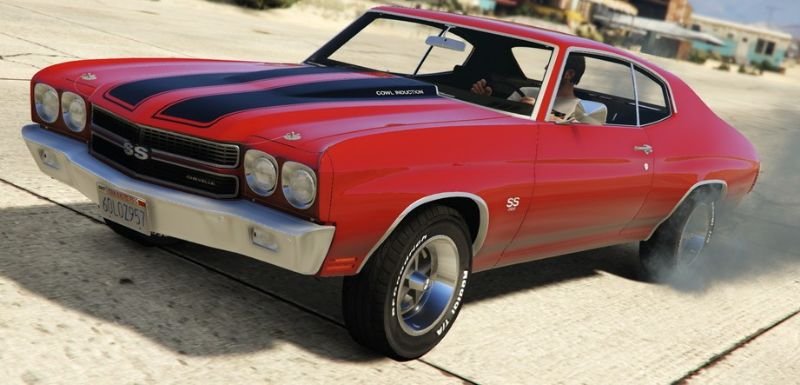


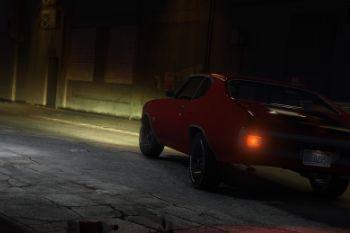
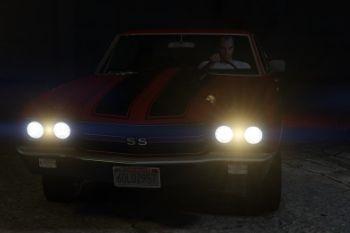
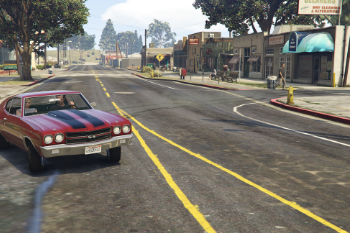
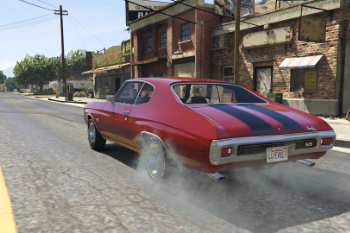

 5mods on Discord
5mods on Discord
Ah the joy of redlight burnout and rear end squatting...perfect for my chevelle mod. In fact,i use your handling for all my muscle car mod with a little top speed difference
@Dannyrachmad Thanks man, I hope you have a great time smoking tires
i have his chevelle as a replace , in what location do i put the handling ?
@raadlatif If you have replaced the sabre with his chevelle then you can extract and edit the games main handling file with openIV in Update/update.rpf/common/data, find the sabreGT and replace its handling with one of my files. If you have replaced any other car besides the sabreGT with his chevelle this handling may cause it to roll over too often. Also you must be careful when editing handling data yourself because the game will not start if you do it incorrectly.
Hi!!
Supp?
i wante to ask u something about your mod for some reson i only get 2 files when i download it
@OBIE209 There should be a 3 speed and a 4 speed handling .meta inside both normal deformation and increased deformation folders. Thanks for the stars and I hope you enjoy.
i think at the begging the download failed or something but now i have 4 files but where do i put them?
and thanks
@OBIE209 You just exctract one of the four new handling files and replace the handling file in dragoN777's chevelle_1970 dlc pack with the one you want to use.
BTW Ty but can u please help me after i put ur meta and another guys meta my game got f***** up now almost all cars are drifting+ my game started to lag
That sounds odd, changing an add on vehicles handling should not affect your other vehicles.
If you are using a mods folder in openIV then you can find the original main handling meta in Update/update.rpf/common/data (not in your mods folder obviously)
and then replace the handling meta in your mods folder with the original you found. If you are not using the mods folder feature try to find a place to get the original handling files and see if replacing the modded handling files with the originals fixes your problem. If this doesn't fix your problem you may want to ask someone who is more experienced with mods. Good Luck
I love what you did with the car, thanks
@BlackBradHz No problem man, thanks for the stars. I'm gonna update this one soon
@impactjunky
Which values affect the first gear lengths?
I'm tired of stumpy useless first gears in high torque cars
@rastakilla "Initial drive max flat level" changes the vehicles gearing. When you change that value the speed at which all gears shift is altered but the 1st gear to 2nd gear change has the most noticeable affect. If you raise the gearing too high you may lose a little torque or gain top speed that you may not want. The most realistic general gearing range I've found for the "initial drive max flat level" value is between 160 and 200. Lower value=lower gears higher value=taller gears. If you have too much top speed after changing this value then you can lower top speed to the proper area by raising the drag coefficient value.
@Impactjunky I noticed you are using a 4.1 Inertia value can you explain this?
Does it simulate torque or is it really just faster RPMs????
@rastakilla That just adds torque not RPM, I usually match the driveinertia value to the cars real life final drive ratio and add drag value to lower the top speed accordingly. Its why my cars spin the tires and go realistic speeds with only 3 and 4 speed transmissions.
@Impactjunky I was wondering if we can expect more rusty liveries for car mods and if you have some to share. I just like them a little too much! ;)
@inbetweendays_ Thanks man, yep I have a worn/rusted livery for a Polara police car coming out soon and it looks kinda cool. It has a Blaine County Sherriff's office logo on the door that has been partially worn off and spray painted over, it's been done for over a year now but I haven't been able to post it until recently. I'll upload it sometime soon and also get to work on some new stuff.
@Impactjunky Sounds good man, thank you!